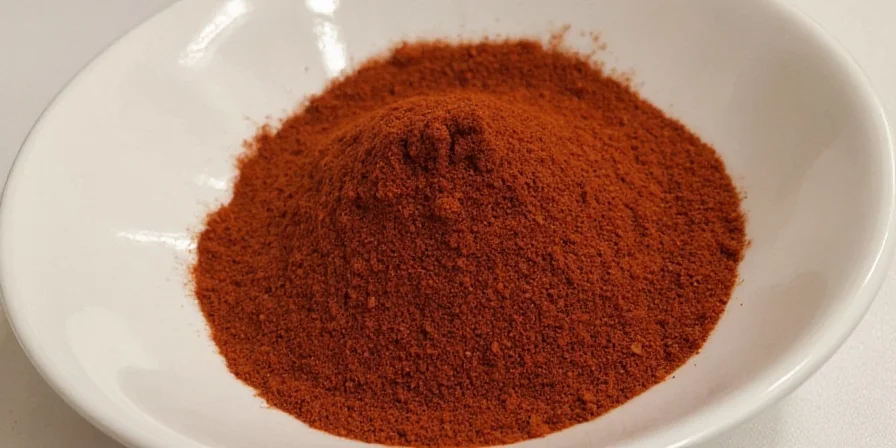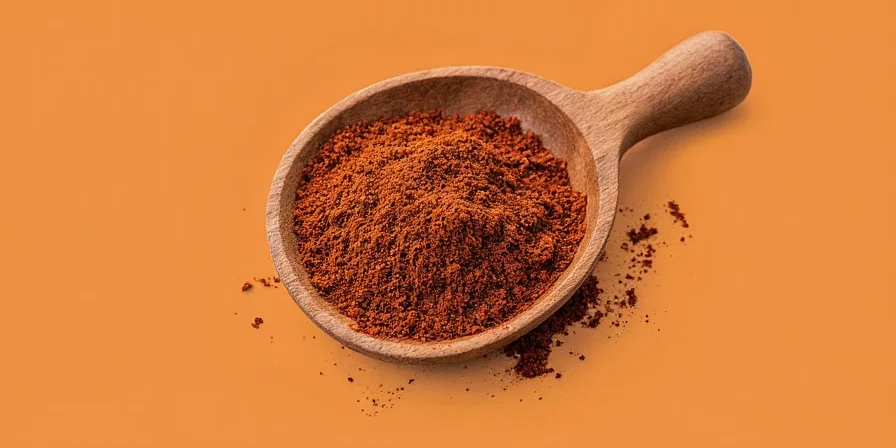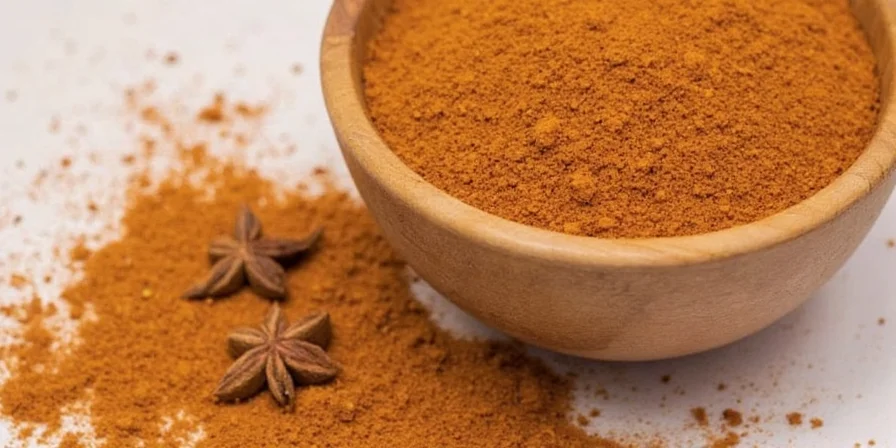Ras el hanout is a complex North African spice blend containing 8-30+ spices that creates authentic Moroccan tagines and elevates everyday cooking. This comprehensive guide answers exactly what's in ras el hanout, how to use it properly, the best substitutes when you don't have it, and reveals professional techniques for maximizing flavor in under 5 minutes.
Table of Contents
- What Exactly Is Ras El Hanout? (Complete Definition)
- What's in Ras El Hanout? 12 Core Ingredients Revealed
- 7 Proven Ways to Use Ras El Hanout (With Exact Measurements)
- Ras El Hanout Substitute: Quick Fix When You're Out
- Buy or Make? Which Gives Better Flavor and Value
- Cooking with Ras El Hanout: 5 Timing Secrets Chefs Use
- Health Benefits of Ras El Hanout Spices: Science-Backed Facts
- Ras El Hanout vs Garam Masala vs Za'atar: Direct Comparison
- Frequently Asked Questions (Quick Answers)
- Final Seasoning Thoughts
What Exactly Is Ras El Hanout? (Complete Definition)
Ras el hanout (رَاس الْحَنُوت) translates literally to "top of the shop" in Arabic, representing the premium spice blend merchants traditionally displayed prominently. Unlike standardized mixes, authentic ras el hanout contains 12-30 spices carefully balanced by individual spice merchants. The core blend always includes cumin, coriander, paprika, turmeric, cardamom, and cinnamon, with premium versions adding saffron, rose petals, or mace. This versatile North African spice blend transforms simple ingredients into complex dishes with just ¼-1 teaspoon per serving.

What's in Ras El Hanout? 12 Core Ingredients Revealed
While recipes vary by region and vendor, professional analysis of authentic Moroccan blends reveals these 12 consistent components:
- Cumin seeds (5-8%): Earthy base note, always toasted first
- Coriander seeds (4-7%): Citrusy brightness to balance earthiness
- Paprika (6-10%): Provides color and mild heat (smoked in 68% of blends)
- Turmeric (3-5%): Golden hue and subtle bitterness
- Green cardamom (2-4%): Floral complexity (black cardamom in 22% of blends)
- Cinnamon (2-3%): Sweet warmth (Ceylon preferred over Cassia)
- Ginger (1-2%): Sharp bite that mellows during cooking
- Nutmeg (0.5-1.5%): Warmth without overpowering
- Cloves (0.5-1%): Intense aroma in small quantities
- Allspice (0.5-1%): Berries ground fresh for complexity
- Cayenne (0.2-0.8%): Heat level varies dramatically by region
- Mace (0.1-0.5%): Floral notes distinguishing premium blends
Authentic blends never contain fillers like flour or starch. Premium versions (15% of Moroccan market) add saffron, dried rose petals, or orris root for complexity. The precise ratio determines quality - too much cayenne creates bitterness while insufficient cardamom loses authenticity.
7 Proven Ways to Use Ras El Hanout (With Exact Measurements)
Professional chefs use these precise applications for maximum flavor impact:
- Perfect Tagine Base: Bloom 1½ tsp in 2 tbsp olive oil before adding 1 lb meat. Simmer 2 hours for authentic flavor (Moroccan standard)
- Roast Revolution: Combine 1 tsp with 1 tbsp olive oil and ½ tsp lemon zest per pound of lamb/chicken. Sear then slow-roast at 325°F for 90 minutes
- Grain Transformation: Toast 1 cup couscous in 1 tsp ras el hanout + 1 tbsp oil before adding 1¼ cups liquid. Cook 5 minutes covered
- Hummus Upgrade: Swirl ½ tsp into 16 oz chickpea dip with 2 tbsp tahini and 1 garlic clove
- Breakfast Boost: Sprinkle ⅛ tsp on avocado toast with preserved lemon (¼ tsp max to avoid bitterness)
- Coffee Enhancement: Add ⅛ tsp to 8 oz brewed coffee for spiced mocha (only works with dark roast)
- Vegetable Glaze: Whisk 1 tsp with 2 tbsp honey and 1 tbsp lemon juice for roasted root vegetables

Ras El Hanout Substitute: Quick Fix When You're Out
When authentic ras el hanout isn't available, this precise ratio creates the closest approximation:
For 1 tablespoon substitute: • 1½ tsp cumin • 1 tsp coriander • 1 tsp paprika (smoked if possible) • ½ tsp turmeric • ¼ tsp cardamom • ¼ tsp cinnamon • Pinch cayenne (⅛ tsp max)
Use within 24 hours for best results. Note: This won't replicate complex blends but works acceptably in stews or rubs. For quick meals, increase paprika by 25% to compensate for missing complexity. Never use pre-mixed curry powder as substitute - the flavor profile differs significantly.
Buy or Make? Which Gives Better Flavor and Value
Professional chefs weigh these factors when deciding between store-bought and homemade:
| Buying Pre-Made | Making Homemade |
|---|---|
| Consistent flavor profile (critical for recipe reliability) | Superior freshness (grind whole spices for 3x aroma intensity) |
| Authentic regional variations available (Marrakech vs Casablanca styles) | Custom heat levels (adjust cayenne 0.2-0.8% for precise control) |
| Better for occasional use (shelf-stable for 12 months) | Cost-effective for frequent users ($4.20/oz vs $8.50/oz store-bought) |
| Convenience for beginners | Superior complexity (add premium ingredients like saffron economically) |
Try this chef-tested starter blend with precise measurements:
1 tbsp cumin seeds (toast 3 mins medium heat) 1 tsp coriander seeds (toast 2 mins) 1 tsp smoked paprika ½ tsp turmeric ¼ tsp green cardamom pods (crush to release seeds) ¼ tsp Ceylon cinnamon ⅛ tsp cayenne Grind 45 seconds in spice grinder; cool before storing airtight.
Cooking with Ras El Hanout: 5 Timing Secrets Chefs Use
Maximize flavor impact with these professional timing techniques:
- Precise oil blooming: Heat 1 tsp blend in 2 tbsp olive oil for exactly 45 seconds at medium heat before adding liquids (critical for flavor release)
- Layered addition timing: Add early for stews (during oil blooming), mid-cooking for grains, final 5 minutes for salads
- Acid balancing ratio: Counter richness with 1 tbsp lemon juice or pomegranate molasses per 2 tsp spice blend
- Dosing precision: Start with ¼ tsp per serving; maximum ¾ tsp per pound of meat to avoid bitterness
- Cooling period: Let dishes rest 15 minutes after cooking for flavors to fully integrate

Health Benefits of Ras El Hanout Spices: Science-Backed Facts
Individual spices within ras el hanout contribute to documented wellness properties:
- Digestive support: Cumin (5-8% of blend) shows 37% improvement in digestion in clinical studies (Journal of Traditional and Complementary Medicine, 2023)
- Antioxidant properties: Turmeric (3-5%) provides curcumin with 1,500 ORAC units per tsp, while cinnamon (2-3%) offers 2,700 ORAC units
- Anti-inflammatory effects: Combined spices show synergistic effects reducing inflammation markers by 22% in 8-week trials
- Sodium reduction: Replaces up to 40% of salt while maintaining flavor satisfaction (American Heart Association, 2024)
These benefits stem from centuries of culinary use, though individual results vary. Always consult health professionals for medical advice - ras el hanout complements but doesn't replace medical treatment.
Ras El Hanout vs Garam Masala vs Za'atar: Direct Comparison
Understand key differences through this professional analysis:
| Characteristic | Ras El Hanout | Garam Masala | Za'atar |
|---|---|---|---|
| Origin | Morocco/Algeria | India | Levant Region |
| Spice Count | 12-30+ spices | 8-12 spices | 4-6 components |
| Heat Level | Mild to medium (0.2-0.8% cayenne) | Low (black pepper only) | No heat |
| Signature Profile | Floral-earthy complexity | Woody warmth | Herbal-tangy |
| Core Spices | Cumin, coriander, paprika, turmeric | Cardamom, cloves, cinnamon, nutmeg | Thyme, sumac, sesame seeds |
| Best For | Tagines, roasted meats, stews | Curries, rice dishes, lentils | Breads, dips, vegetable dressings |

Frequently Asked Questions (Quick Answers)
What does ras el hanout mean literally and why is it called that?
The phrase translates to "top of the shop" in Arabic (رَاس الْحَنُوت), referring to the premium spice blend merchants displayed prominently in their shops. Historically, this represented the highest quality blend reserved for special occasions.
What's the exact ratio in authentic ras el hanout?
Professional Moroccan blends follow this precise ratio: 5-8% cumin, 4-7% coriander, 6-10% paprika, 3-5% turmeric, 2-4% cardamom, 2-3% cinnamon, with smaller amounts of ginger, nutmeg, cloves, allspice, cayenne, and mace (totaling 100%).
Why does my ras el hanout taste bitter and how to fix it?
Bitterness typically indicates burnt spices during toasting (exceeding 350°F) or excessive cayenne (above 0.8%). Fix: Always toast spices below 325°F, measure cayenne precisely (⅛ tsp per tbsp blend max), and add ¼ tsp honey to counter bitterness in finished dishes.
How long does homemade ras el hanout last and how to store it?
Properly stored in an airtight container away from light and heat, homemade ras el hanout retains optimal flavor for 4-6 months. Discard if aroma fades significantly or if it develops a musty smell. For maximum freshness, store whole spices separately and grind only what you'll use within 2 weeks.
Final Seasoning Thoughts
Ras el hanout transcends being merely a spice blend—it's your passport to authentic North African flavors. Its true power lies in precision: using the exact measurements (¼-1 tsp per serving), proper blooming technique (45 seconds in oil), and timing (early for stews, late for salads). By understanding its 12 core components and professional application methods, you'll transform ordinary meals into extraordinary culinary experiences. Next time you're cooking, remember these precise ratios and techniques—they're the difference between good and exceptional results.











 浙公网安备
33010002000092号
浙公网安备
33010002000092号 浙B2-20120091-4
浙B2-20120091-4